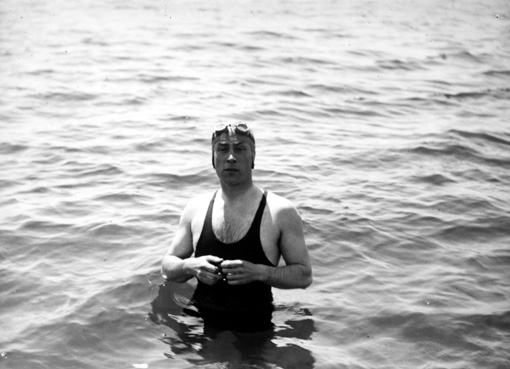Science Is Fiction: The Films of Jean Painlevé
With this circle of friends and acquaintances, it is not surprising that Painlevé is usually associated with the surrealists. In 1924, for instance, Painlevé contributed two short pieces, ‘An Example of Surrealism: The Cinema’ and ‘Neo-Zoological Drama,’ to the first and only issue of Surréalisme, a journal edited by Ivan Goll that included contributions by Guillaume Apollinaire and Robert Delaunay, among others. (This journal is not to be confused, as it sometimes is, with Le Surréalisme au service de la révolution, the more influential and longer-lived journal edited by André Breton that first appeared in 1930.) He also filmed vignettes that were projected in Goll’s dadaist/surrealist play Methuselah (1927). And he once used his father’s political influence to spring Andre Breton and other surrealists from jail after one of their provocations—a group assault on a man carrying an umbrella on a cloudy day—resulted in a trip to jail. But he was not to figure prominently in the history of orthodox surrealism, leaving the orbit of Breton in large part because of disagreement over the importance of music. His personality would always contain aspects of surrealism’s provocative, antiauthoritarian tendencies. As late as 1986, for instance, Painlevé said in a Libération interview, ‘I’m very proud that we live in an era that finally recognizes its dependence on shit. All of genetics relies on colon bacilli, which in turn rely on our feces. All experiments are done on it. We’re deep into the shit.’

Jean Painlevé (BFI / Courtesy of Brigitte Berg)
Painlevé’s films elicited enthusiastic responses from artists: his study of skeleton shrimps and sea spiders, Caprella and Pantopoda, which was screened in 1930 at the newly opened Les Miracles theater, caused Fernand Léger to call it the most beautiful ballet he had ever seen, and Marc Chagall praised its ‘incomparable plastic wealth,’ calling it ‘genuine art, without fuss.’ But Painlevé would come into his own not as an avant-garde artist per se; his real achievement lies in his ability to traffic between scientific and avant-garde experimentation. For him the undersea world functioned as an alternate universe whose denizens resembled humans in some respects and diverged radically in others. Painlevé’s regard for his underwater subjects does not result in a collection of cute critters in the Disney mode of anthropomorphism; instead, the creatures he lovingly documents can fill us with equal parts of wonder and admiration as well as terror and disgust.
 Learning on Screen
Learning on Screen